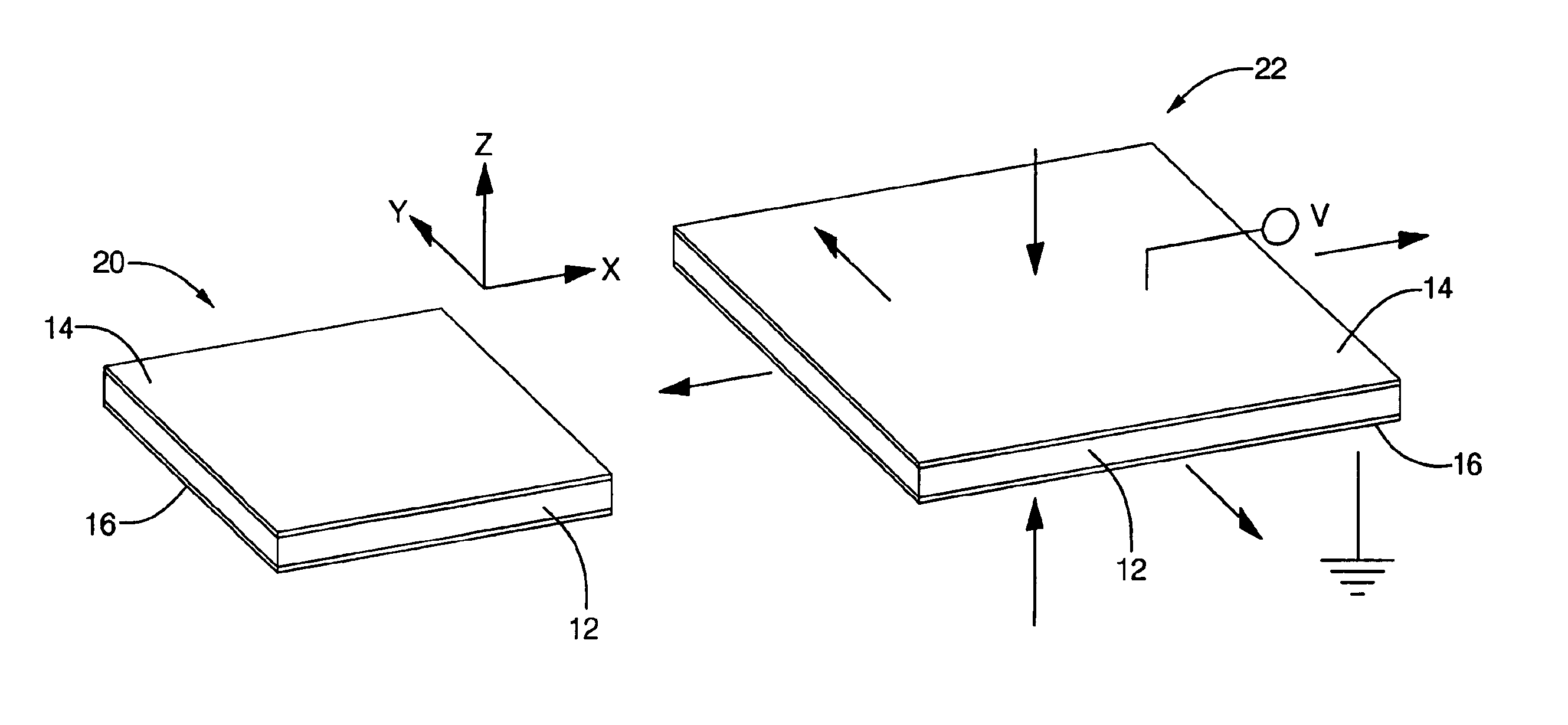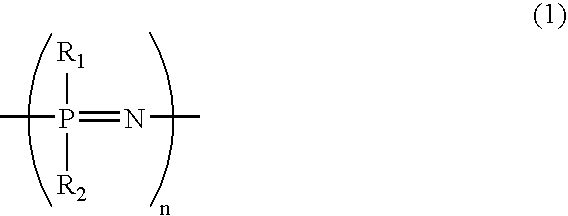Elastomeric polyphosphazene transducers, methods of making, and methods of use thereof
a polyphosphazene and polymer technology, applied in the field of transducers, can solve the problems of high density, low strain value, and inapplicability of technology
- Summary
- Abstract
- Description
- Claims
- Application Information
AI Technical Summary
Benefits of technology
Problems solved by technology
Method used
Image
Examples
examples
Synthesis of Polyphosphazenes
Unless otherwise noted, all procedures were performed in a dry argon or nitrogen atmosphere using a glove box or dual manifold line.
Thermal polymerization of phosphonitrilic chloride: Polydichlorophosphazene was prepared by placing 50 grams of phosphonitrilic chloride trimer in a thick-walled glass ampule to which was attached a Teflon stopcock. The ampule was evacuated to about 0.1 millimeters of mercury (mm Hg) for at least 12 hours and the stopcock was closed. The phosphonitrilic chloride trimer was heated until completely molten and then allowed to cool. The stopcock was then opened and the ampule was evacuated to at least 0.1 mm Hg for 15 minutes. The contents were then heated again until molten after closing the stopcock. This cycle was repeated for a total of three times. The ampule was evacuated to at least about 0.1 mm Hg and sealed. Polymerization was accomplished by placing the sealed ampule in a 250° C. oven for about 28 hours.
Another method ...
PUM
| Property | Measurement | Unit |
|---|---|---|
| thickness | aaaaa | aaaaa |
| conductive | aaaaa | aaaaa |
| electrical energy | aaaaa | aaaaa |
Abstract
Description
Claims
Application Information
 Login to View More
Login to View More - R&D
- Intellectual Property
- Life Sciences
- Materials
- Tech Scout
- Unparalleled Data Quality
- Higher Quality Content
- 60% Fewer Hallucinations
Browse by: Latest US Patents, China's latest patents, Technical Efficacy Thesaurus, Application Domain, Technology Topic, Popular Technical Reports.
© 2025 PatSnap. All rights reserved.Legal|Privacy policy|Modern Slavery Act Transparency Statement|Sitemap|About US| Contact US: help@patsnap.com



